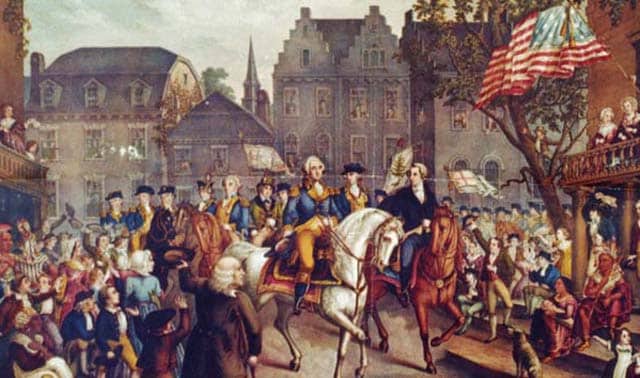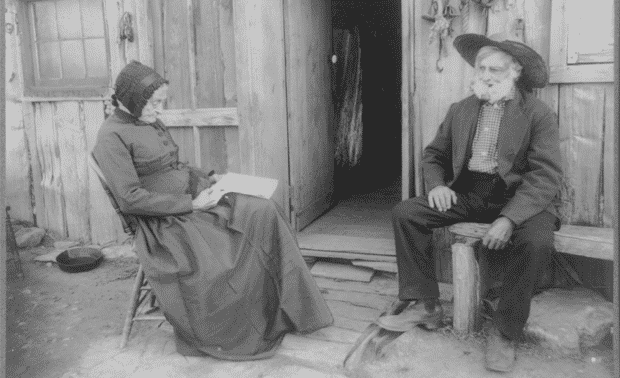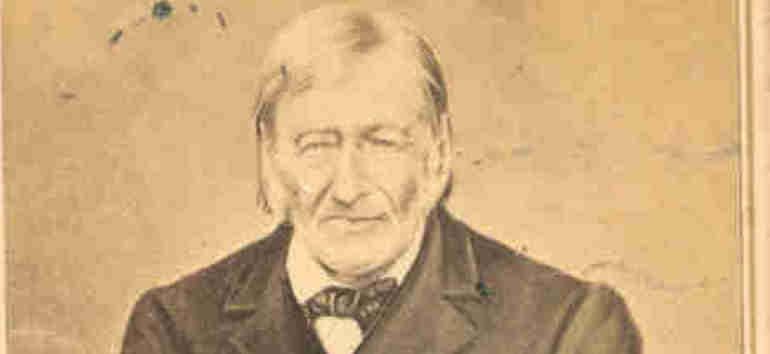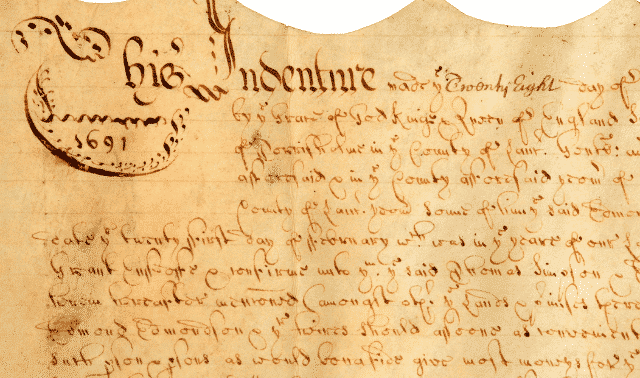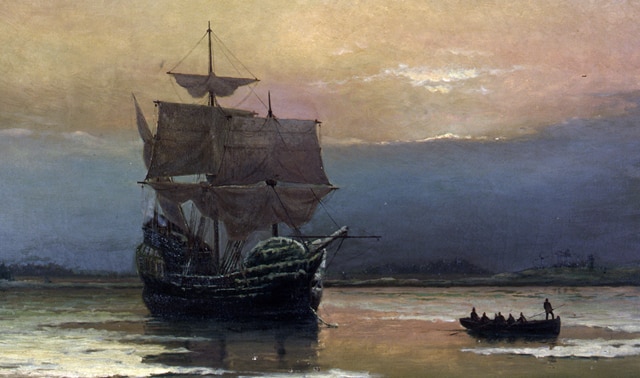Sign up for the Family Tree Newsletter! Plus, you’ll receive our 10 Essential Genealogy Research Forms PDF as a special thank you.
Get Your Free Genealogy Forms
"*" indicates required fields

Were your ancestors in America to witness the signing of the Declaration of Independence or the first shots of the American Revolution—or even before then?
Lindsay Fulton, a staff genealogist at the New England Historic Genealogical Society (NEHGS), researches Colonial and early American ancestors for a living. In this Q&A, she was kind enough to share her go-to resources for overcoming the challenges of tracing ancestors from this era.
Q: What’s the biggest challenge in tracing Colonial-era and early Americans?
A: The most common challenges are:
- The identity of an ancestor’s mother and father (especially if trying to determine the maiden name of the mother). So often, genealogists are able to discover the first name of their female ancestors but cannot identify a maiden name. The solution often involves intense “cluster study” research with original records.
- The place of birth or origin of an individual’s earliest known ancestor. Because 17th and 18th century passenger lists rarely survived, researchers are often forced to use alternative records to identify an ancestor’s country of origin.
Q: How can you confirm that a relative served in the American Revolution?
A: If you suspect your ancestor served in the American Revolution, you must first determine the possible town (or state) from which he may have served. If a Revolutionary War record exists for your ancestor, it will be filed under the state of service. Next, you should examine record collections specific to the Revolutionary War. Some of these are:
- Revolutionary War Rolls and Pension Files, available at Fold3 and the NEHGS library in Boston
- Valley Forge Muster Roll Project
- Massachusetts Soldiers and Sailors of the Revolution
- Daughters of the American Revolution Library in Washington, DC
Q: What are some great resources for researching Colonial-era and early Americans?
A: Because 17th-century New Englanders are one of the most-studied ancestry groups, a multitude of resources are available at NEHGS and beyond. My top 10 include:
- The Great Migration Begins: Immigrants to New England, 1620-1633 by Robert Charles Anderson (NEHGS): Anderson utilizes original records, as well as the scholarship of the last 100 years, to provide a detailed, documented look at the immigrants and their families. The text is also available online to NEHGS members. Read more about the Great Migration Project here.
- The Great Migration: Immigrants to New England 1634-1635 (7 vols. to date, NEHGS) by Robert Charles Anderson
- New Englanders in the 1600s: A Guide to Genealogical Research Published Between 1980 and 2010 by Martin E.A. Hollick
- Founders of Early American Families: Emigrants from Europe, 1607-1657 by Meredith B. Colket: This book is an annotated list of the known immigrants who settled on the East coast within the first 50 years of English settlement (beginning with the establishment of Jamestown in 1607).
- A Genealogical Dictionary of the First Settlers of New England, Showing Three Generations of Those Who Came Before May 1692, on the Basis of Farmer’s Register (Little, Brown, 1860-62) by James Savage: This is one of the principal sources of information on some of the more obscure 17th-century New England families.
- New England Marriages Prior to 1700 by Clarence Almon Torrey: This annotated list (including sources) of approximately 38,000 marriages of New Englanders prior to 1700 is also available to NEHGS members.
- A Genealogical Register of the First Settlers of New England (1829, Genealogical Publishing Co., reprinted 1964) by John Farmer: An all-inclusive dictionary of the earliest settlers of New England.
- American Genealogical-Biographical Index to American Genealogical, Biographical and Local History Materials (Godfrey Memorial Library, 206 volumes, plus a 20-volume supplement): This every-name index to printed New England family genealogies, genealogical queries and answers from the Boston Evening Transcript, published Revolutionary War rolls, and the 1790 census is searchable on Ancestry.com or request a search through the Godfrey Memorial Library.
- The New England Historical and Genealogical Register (1847-present): This scholarly genealogical journal presents articles such as compiled genealogies of Colonial New England families, transcriptions of records and how-to articles. The text is available online to NEHGS members.
- The American Genealogist (1922-present): Genealogical articles that focus primarily on New England families. Volumes 1 to 82 are available online to NEHGS members.
Q: Where can you trace immigrants who arrived before 1820, when federally mandated passenger lists of arriving ships began?
A: Passenger lists as we know them today were a result of the Act of March 2, 1819, which required passenger lists for ships from foreign ports. These records often provide the name of the immigrant, age, country of origin and ship name.
Passenger records prior to 1819 rarely survived, and failed to provide such specific information. Alternative records for 17th- and 18th-century immigrant ancestors include loyalty oaths, new settlement charters and published passenger lists, which can provide an exact year of immigration. Other records, such as freeman records or town meeting minutes, provide an approximate immigration year. Sometimes an estimated year is the closest a researcher will come to locating information about an ancestor’s arrival in Colonial America.
In addition to the Great Migration series mentioned above, some popular published immigration resources (and alterative resources) include:
- Passenger and Immigration Lists Bibliography, 1538-1900 by William P. Filby
- The Original Lists of Persons of Quality, 1600-1700 by John Camden Hotten, available free on Internet Archive
- The Founders of New England by Samuel G. Drake
- Pennsylvania German Pioneers: A Publication of the Original Lists of Arrivals in the Port of Philadelphia from 1727-1808 (3 volumes) by Ralph B. Strassburger and William J. Hinke
- The Palatine Families book series by Hank Z. Jones (they’re listed here)
Q: What substitute sources can help with missing censuses and those head-of-household-only pre-1850 census records?
A: Several record collections can be used to identify members of a family. Commonly, researchers in New England use vital record collections in Maine, Massachusetts, Connecticut, Vermont, New Hampshire and Rhode Island to identify the children of a particular mother and father.
When vital records are unavailable, as is often the case with New York, Mid-Atlantic and Southern states, probate records, land deeds, court records, pension files and city directories may provide more specific information about a family dynamic. For example, a probated will may identify the name of the deceased’s spouse, children and (sometimes) grandchildren.
To locate these alterative records, you could examine the probate and deed record collections available (browseable only) at FamilySearch.org (go here and filter by state), or the American Revolutionary War and the War of 1812 pension records at Fold3. Also try Ancestry.com’s US City Directories, 1821-1989 database.
Thanks again to Lindsay Fulton and NEHGS for providing these tips!
Related Reads
A version of this article was posted online in July 2014. Last updated: July 2025

